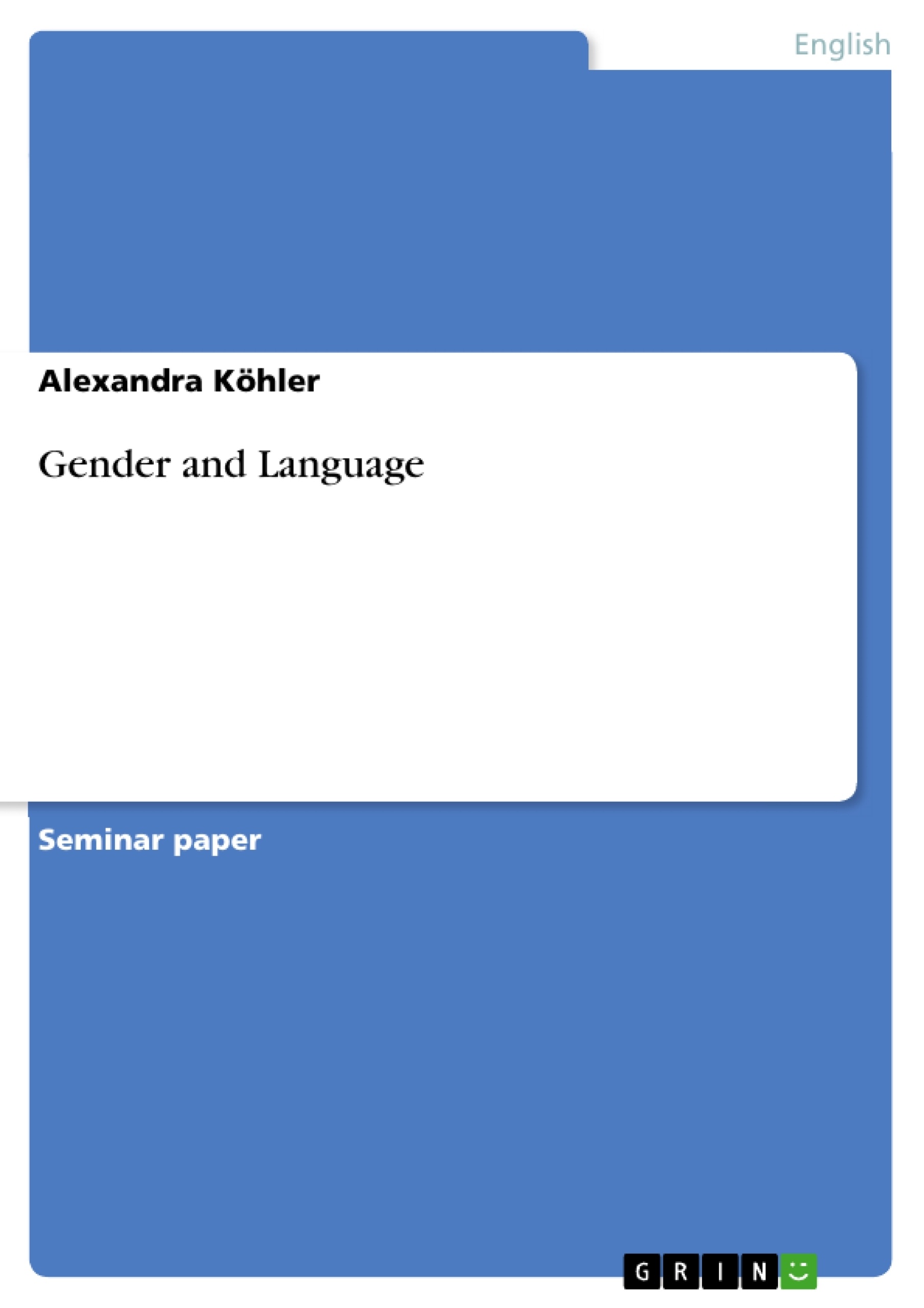For many years linguists and sociologists have studied the patterns of communication between the genders. Language differences emerge at a very early stage of learning to speak. These differences are passed on to the young by the men and women who are around them. As children learn the language of gender differences they also learn the culturally proscribed behavior that is appropriate to their sex. In this paper I want to explain that women and men have different conversational styles. Language differences begin to emerge at the earliest stages of speech development. In this paper I will identify these differences and explain them. The paper is organized in the following manner: The concept of language socialization will be explained. I will also discuss the impact that one’s peer group has on language development. Next I will examine the way in which men and women communicate. Following this discussion of gender differences I will focus on the language patterns that women use.
After the discussion of women’s speech I will contrast the manner in which men communicate and how these differences may result in misunderstandings between the genders. Finally I will distinguish between “saying and implying”. The focus will be what people actually say as they talk to each other.
Inhaltsverzeichnis (Table of Contents)
- Introduction
- Language Socialization
- Communication between men and women
- Women's language
- Misunderstandings between men and women
- Independence
- Orders
- Questions
- Giving advice
- Silence
- Saying and implying
- Conclusion
Zielsetzung und Themenschwerpunkte (Objectives and Key Themes)
This paper aims to explore the differences in conversational styles between women and men. The author argues that these differences are rooted in language socialization, which begins in childhood and is influenced by peer groups and the way children interact with their surroundings.- The role of language socialization in shaping gender differences in communication.
- The distinct conversational styles of men and women.
- The impact of gender-specific language patterns on potential misunderstandings between the sexes.
- The distinction between "saying" and "implying" in communication.
Zusammenfassung der Kapitel (Chapter Summaries)
- Introduction: This chapter defines language as a system of communication and introduces the topic of gender differences in language use. It highlights the early emergence of these differences during childhood and the impact of cultural norms.
- Language Socialization: This chapter explores how language socialization plays a key role in shaping gender differences in communication. It examines the influence of caregivers and peer groups on the development of gender-specific speech patterns.
- Communication between men and women: This section examines how gender-specific language patterns affect communication between men and women. It analyzes how these patterns may contribute to misunderstandings and difficulties in communication.
- Women's language: This chapter focuses on the specific characteristics of women's language, including the emphasis on building relationships, using indirect communication, and avoiding direct confrontations.
Schlüsselwörter (Keywords)
The main keywords and focus topics of this text include language socialization, gender differences in communication, conversational styles, women's language, misunderstandings between men and women, saying and implying, and cultural norms. These concepts highlight the key areas of investigation within the text.- Quote paper
- Alexandra Köhler (Author), 2008, Gender and Language, Munich, GRIN Verlag, https://www.grin.com/document/116643



